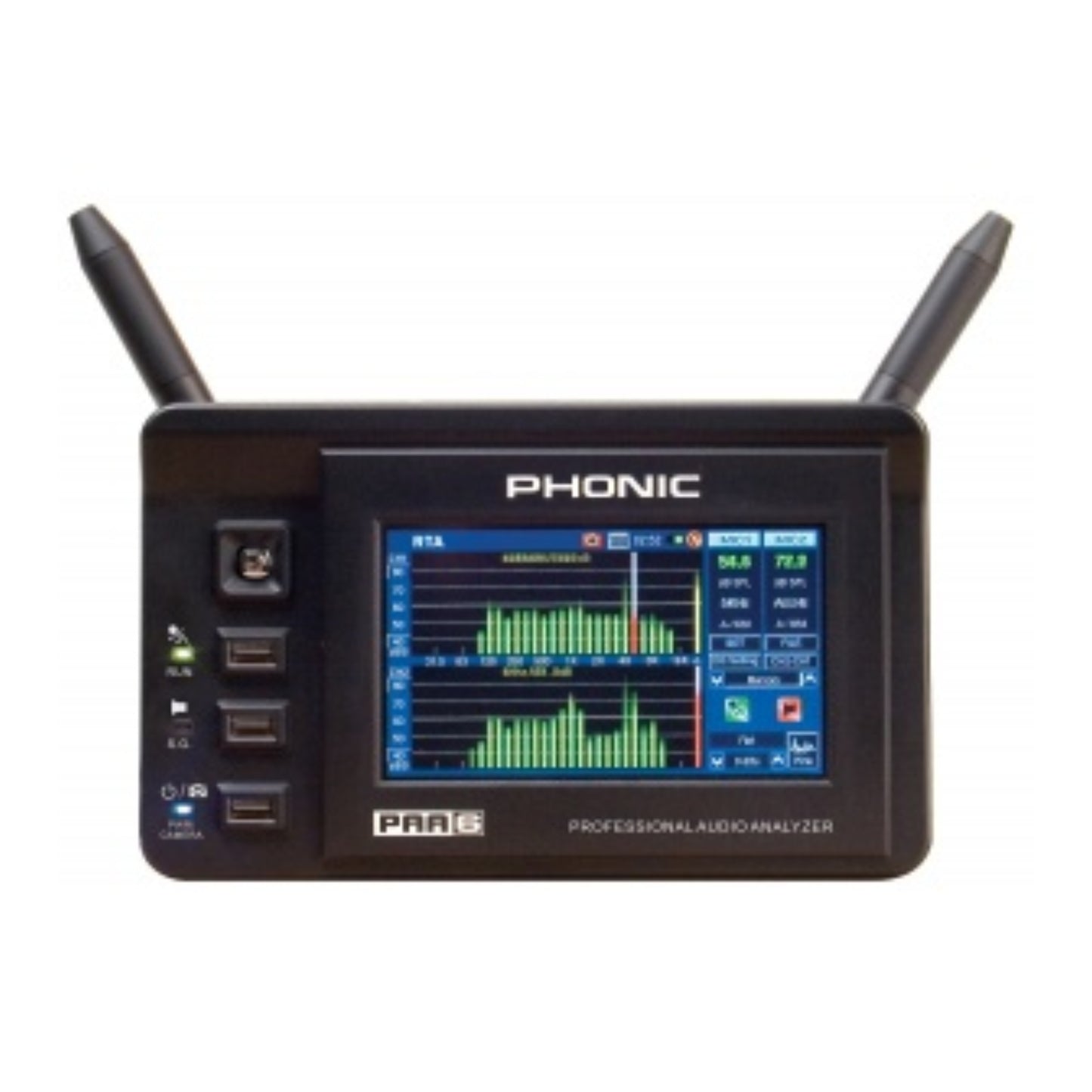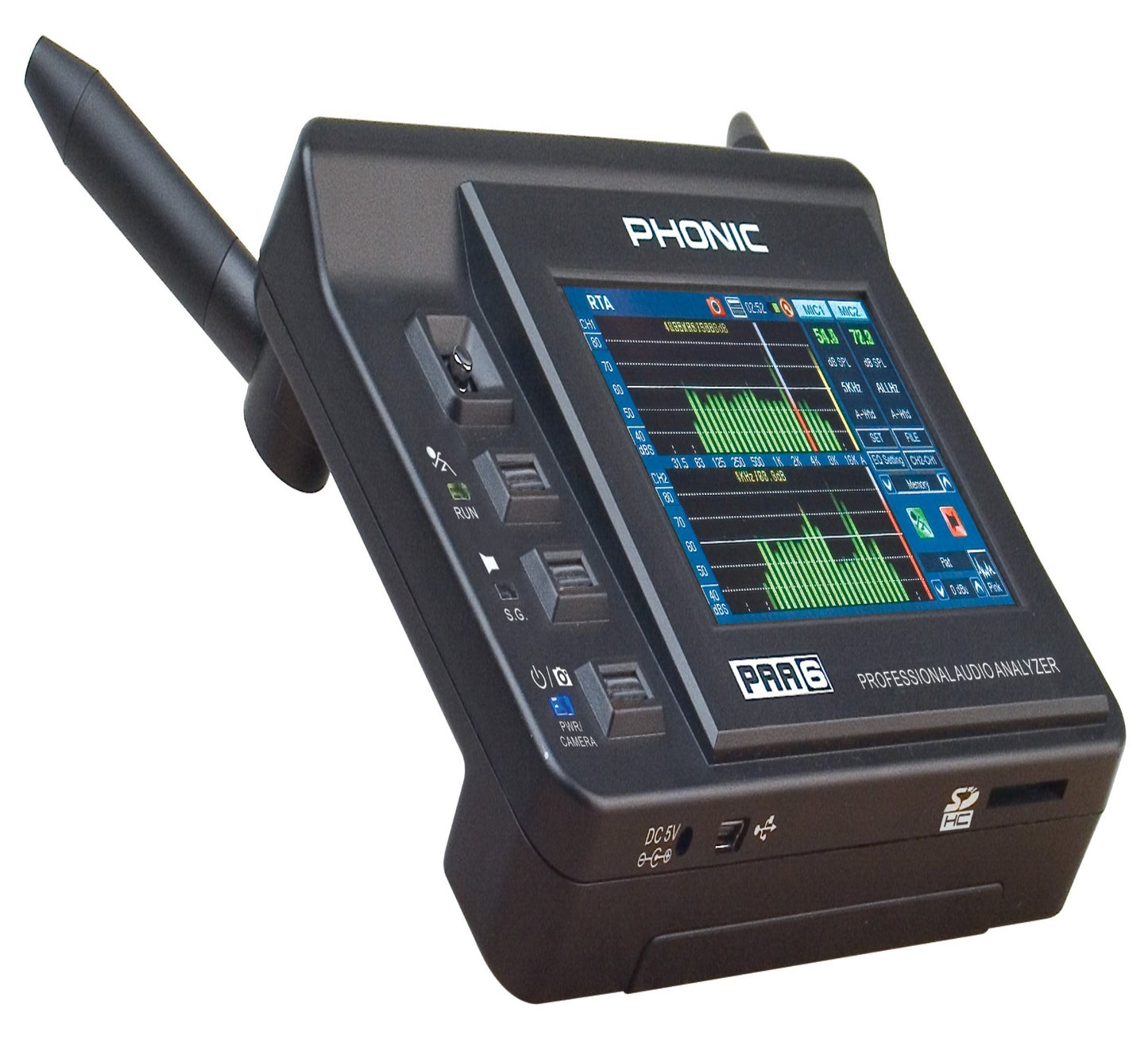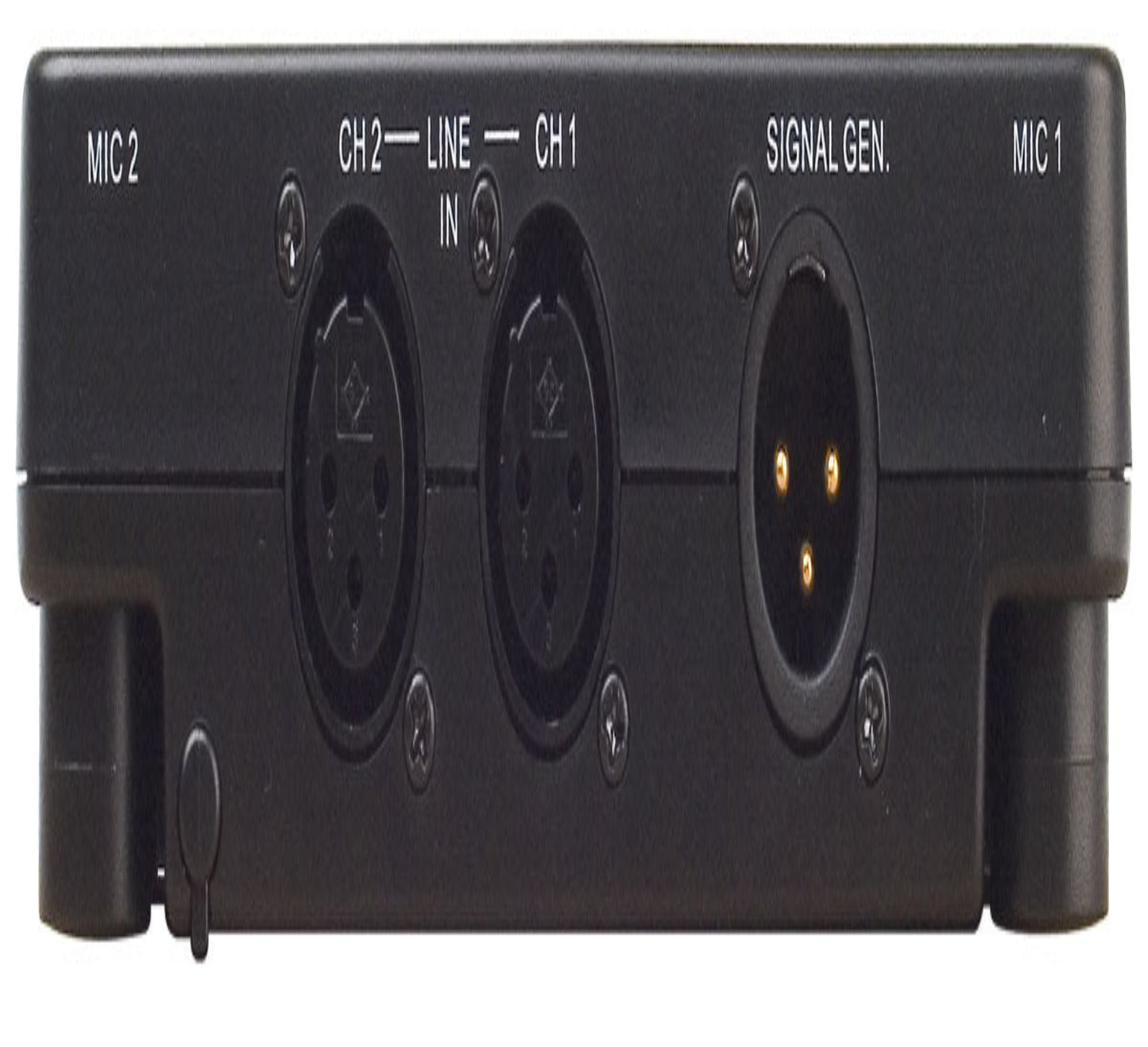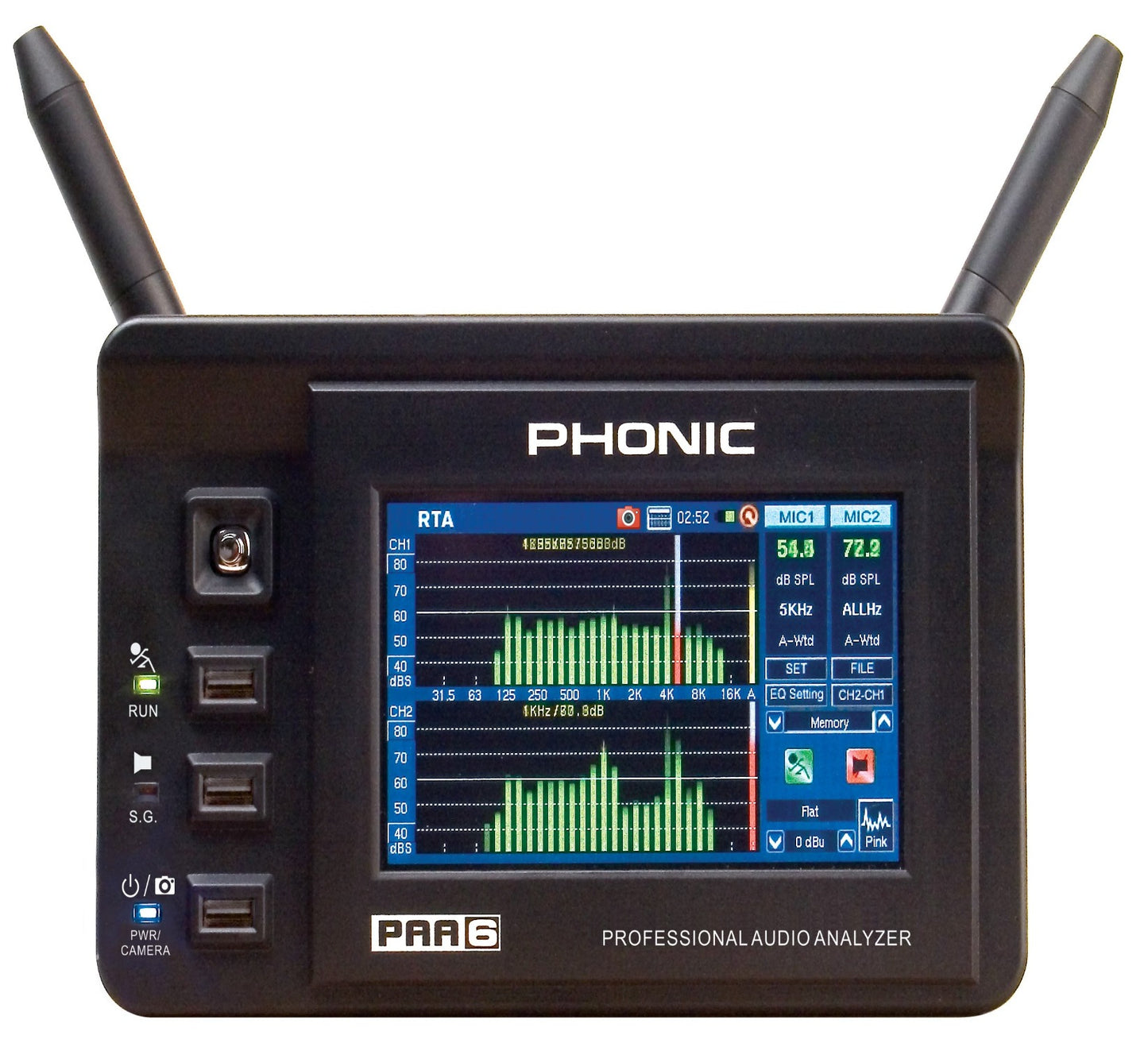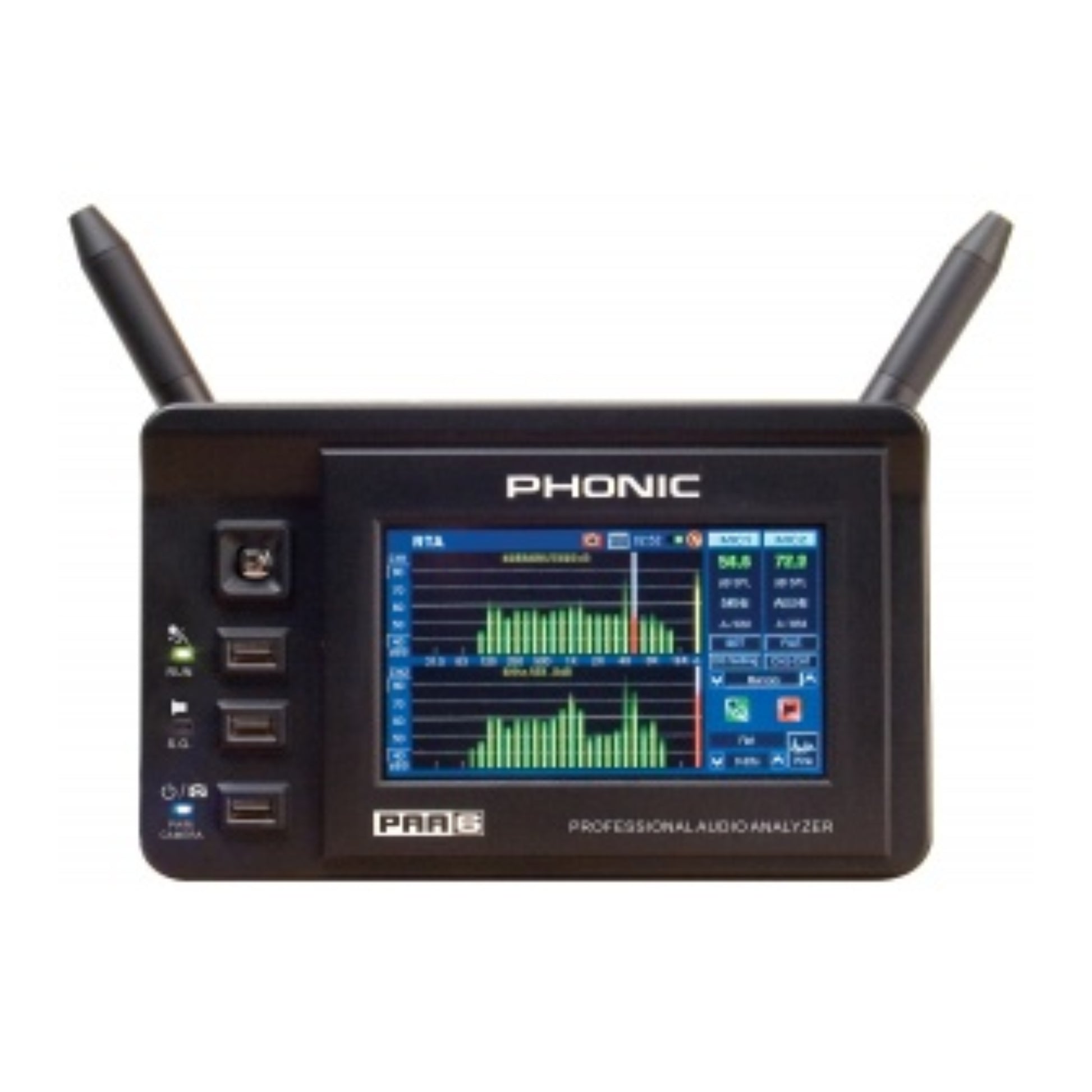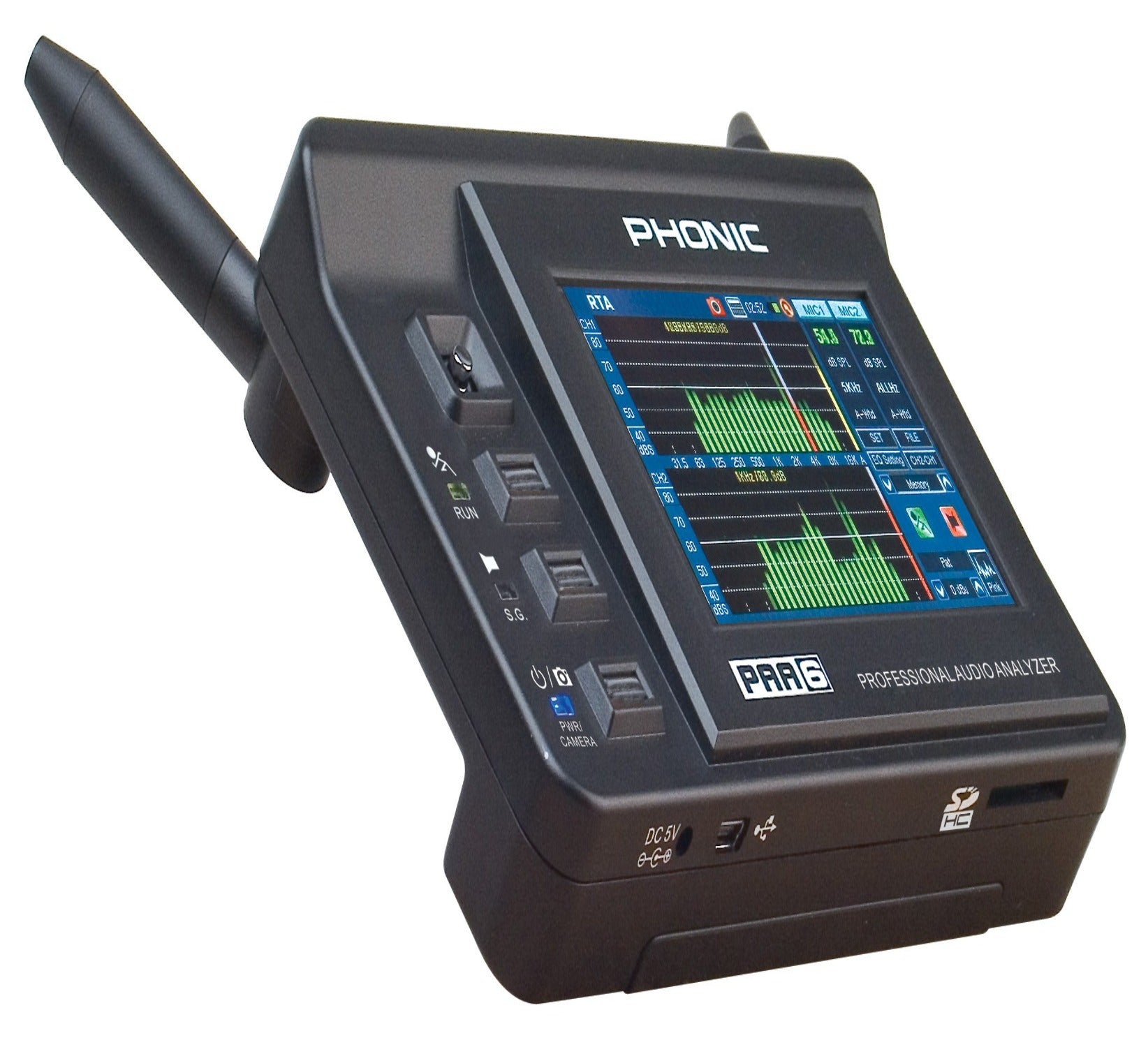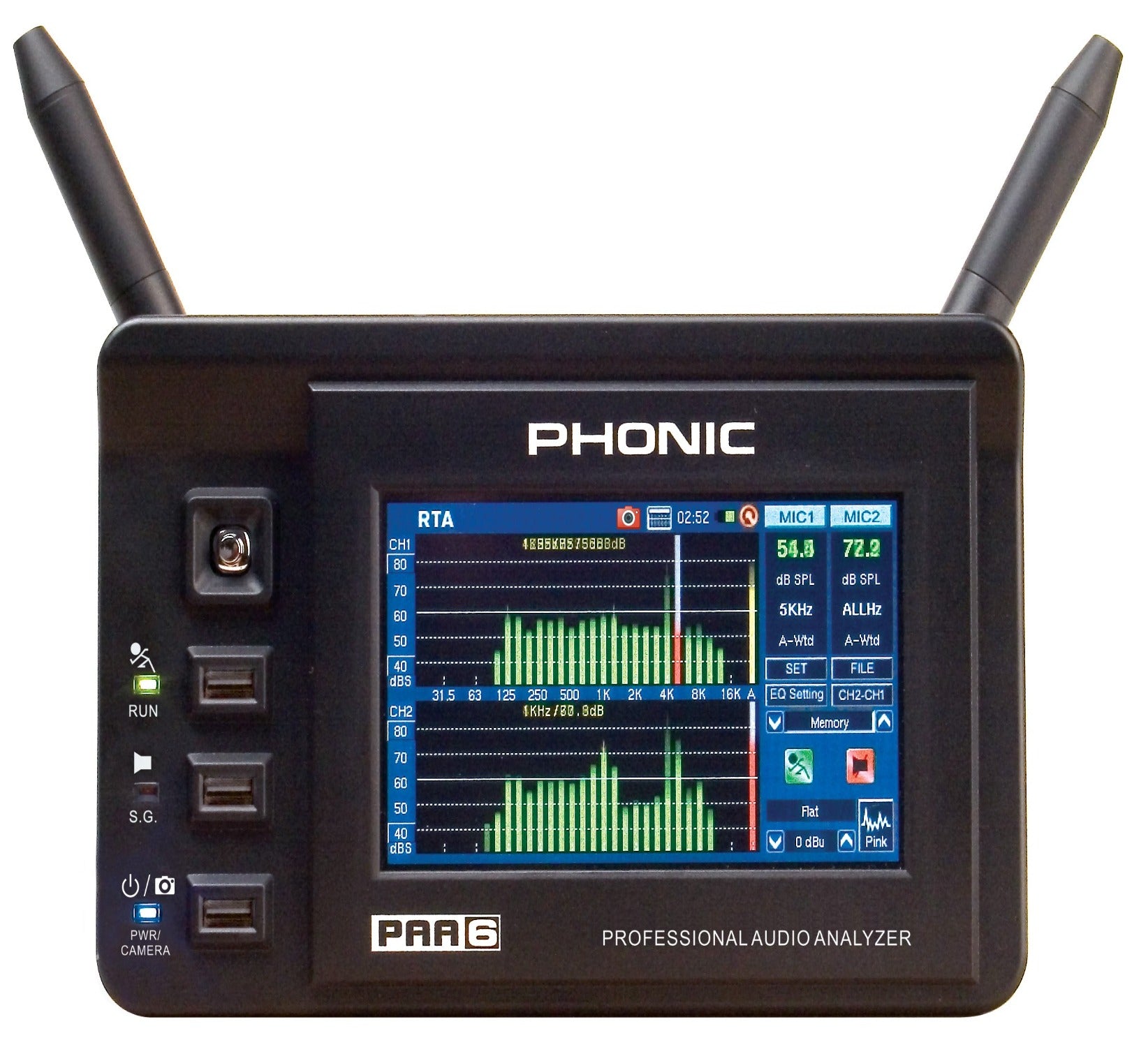PHONIC PAA6
PHONIC PAA6
The PAA6 from Phonic is a 2-channel digital handheld audio analyzer that features a 480 x 272 color touch-screen display. The elegant graphical user interface allows all functions and menus to be easily accessed.
Functions include a real time spectrum analyzer, RT60 measurement, tone generator, LEQ, EQ setting and phase checking. Also available are SLM, FFT, THD+N measurement, and scope functions. The 2 built-in condenser microphones take highly accurate measurements in any given situation.
A USB connector and SD card slot have been included to assist in transferring information to and from a computer. This feature-rich, portable audio tester will satisfy the needs of professional audio engineers, regulatory enforcement agencies, and product development teams.
More Information
More Information
Technical Specification
Technical Specification
